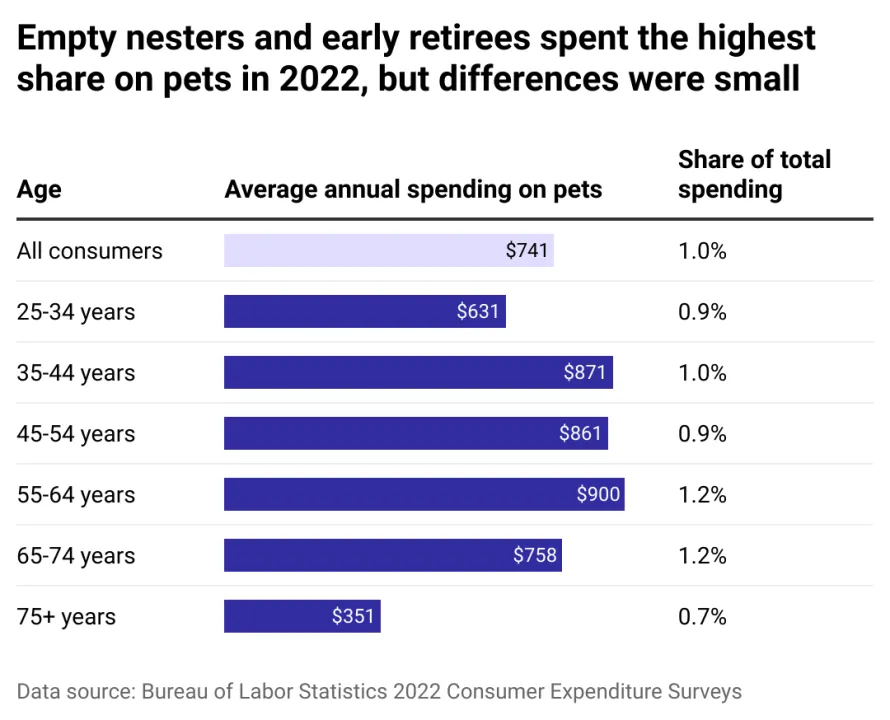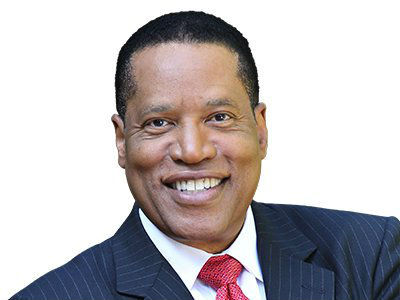Older Americans lead the nation in pet spending, but not by much
Pets

Audio By Carbonatix
By Paxtyn Merten, Stacker

Older Americans lead the nation in pet spending, but not by much
The typical American household spent $741 on their pets in 2022—up from about $583 in 2013 (adjusted for inflation).
Millennials may be known as the generation adopting pets rather than having kids, but recent data shows their actual expenditures on fur babies were slightly outpaced by older age groups. An eTailPet analysis of the 2022 Bureau of Labor Statistics Consumer Expenditure Survey found that spending leveled out between most age groups in 2022 after retirement-age adults led in pet spending by a large margin in 2021.
A BLS analysis shows pet expenditures nationwide reached $102.8 billion in 2021, up about 78% from 2013 and growing at about twice the rate of overall spending. The COVID-19 pandemic pet frenzy accelerated the existing rise in pet spending, as did increasing costs for veterinary care and other pet services. Petco CEO Ron Coughlin told investors that today's "pet parents" are humanizing their animals and spending more as a result, from specialty diets to stylish accessories.
National pet spending did fall slightly in 2022 to about $99.3 billion as pandemic-era work-from-home policies have rolled back, and resulting pet adoptions have likely slowed. After massive increases in 2021, spending on pet purchases, supplies, medicine, and vet services dipped in 2022. Spending on pet food and services, however, continued to rise.
Whether a first pet, an empty nester's new youngest child, or an older person's retirement companion, people of all ages spend hundreds per year on the cats, dogs, and critters they consider a part of their families.
Keep reading to learn more about who is spending the most on their pets.

Empty nesters, early retirees among the groups spending the most on pets
Pets made up 1.2% of expenses among Americans in the 55-64 and 65-74 age groups—tied for the highest as a share of total 2022 spending. The 55-64 group also spent the most by actual dollar volume at $900.
With disposable income, no kids at home (or on the verge of leaving home), and potentially decades left to enjoy life, it makes sense older Americans would spend more time and money on their furry friends. Moreover, studies have shown that interacting with animals helps with healthy aging. Pets can provide companionship, stress relief, and daily routine and exercise, which is particularly beneficial for older pet owners.
For those between the ages of 55 and 64, pets can ease the transition from full-time parent to empty nester or from full-time worker into early retirement. In 2022, about 17% of adults in this age group spent time caring for pets on an average day, compared to 16% of those aged 45-54 and 13% of those aged 35-44, BLS Time Use Survey data shows.
The 65- to 74-year-old demographic is growing and evolving—including in its spending habits. About 1 in 6 U.S. residents are over the age of 65, according to the 2020 Census. They're the fastest-growing age group in the country, at five times the pace of the general population. They're also staying in the workforce at higher rates and earning more than their predecessors, so they have more disposable income for their pets.
While older Americans led the way in spending, younger Americans—married couples who don't have children, specifically—have had the fastest growth in pet ownership, according to a 2022 Washington Post analysis that measured time spent with pets as a proxy for ownership. The 35- to 44-year-old demographic spent the second most on pets in 2022, at $871 on average.
As Americans at various life stages continue welcoming animals into their families, analysts project spending will continue to grow at impressive rates.
Story editing by Ashleigh Graf. Copy editing by Paris Close. Photo selection by Clarese Moller.
This story was produced by Rain and was produced and distributed in partnership with Stacker.

























